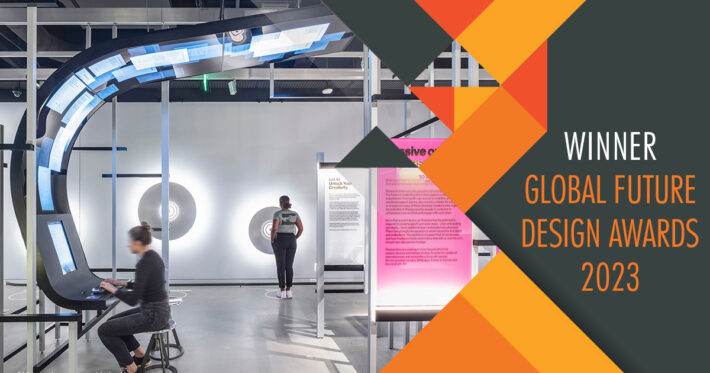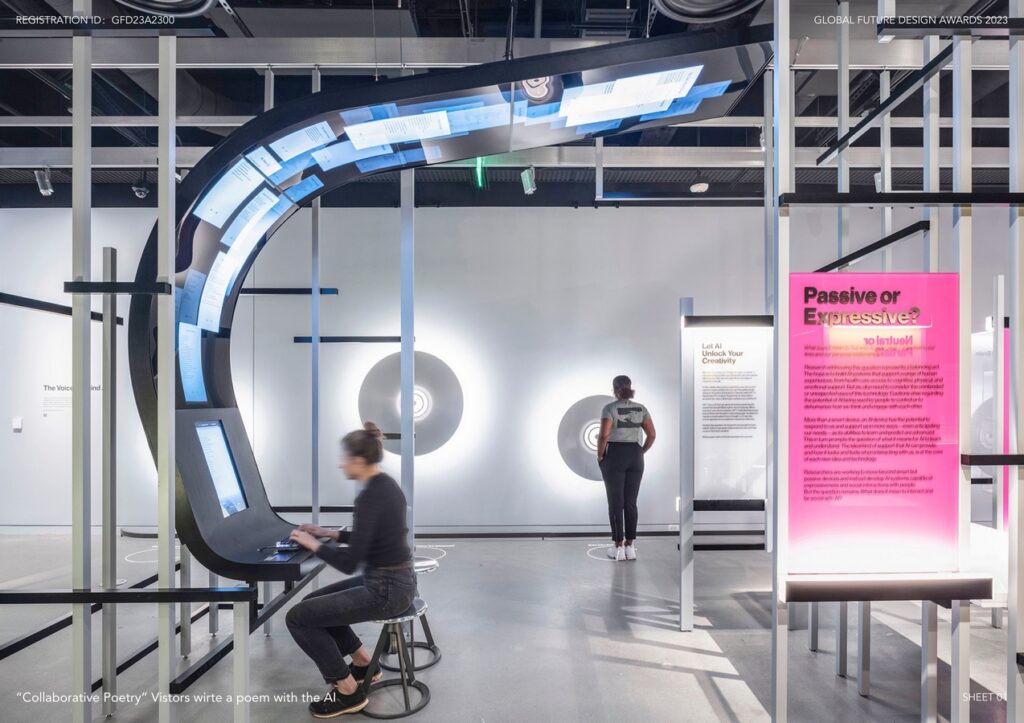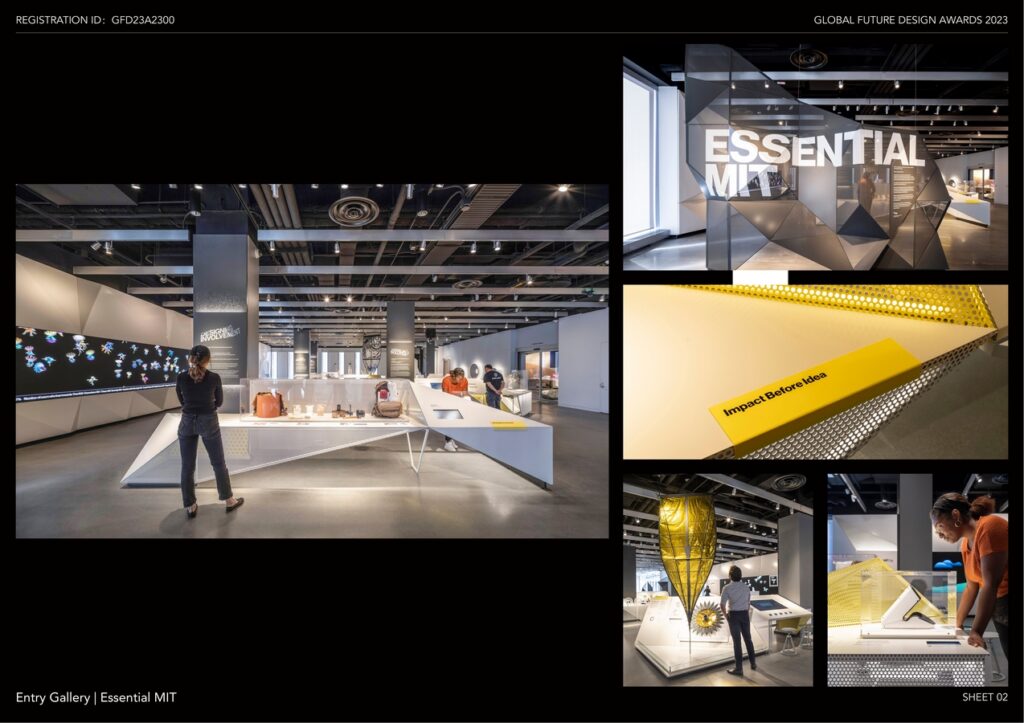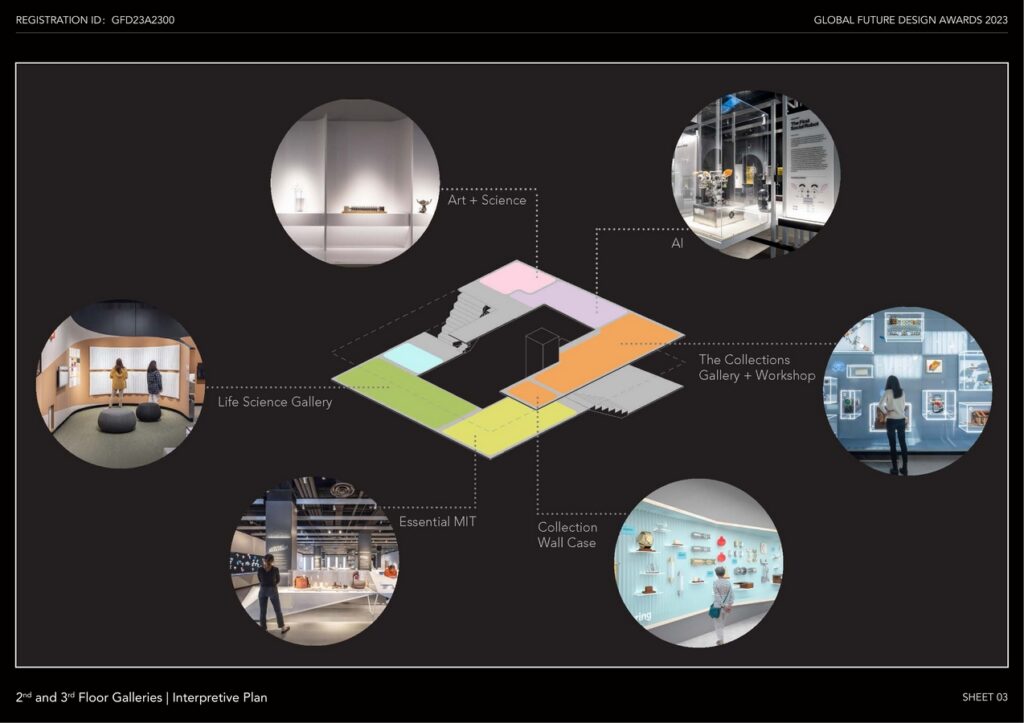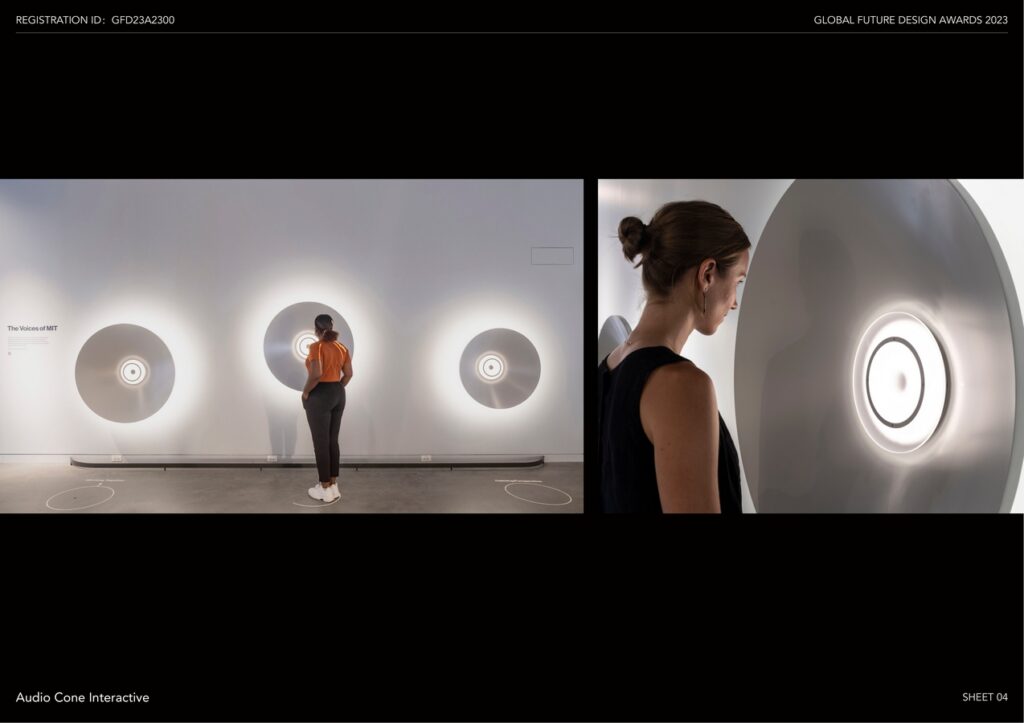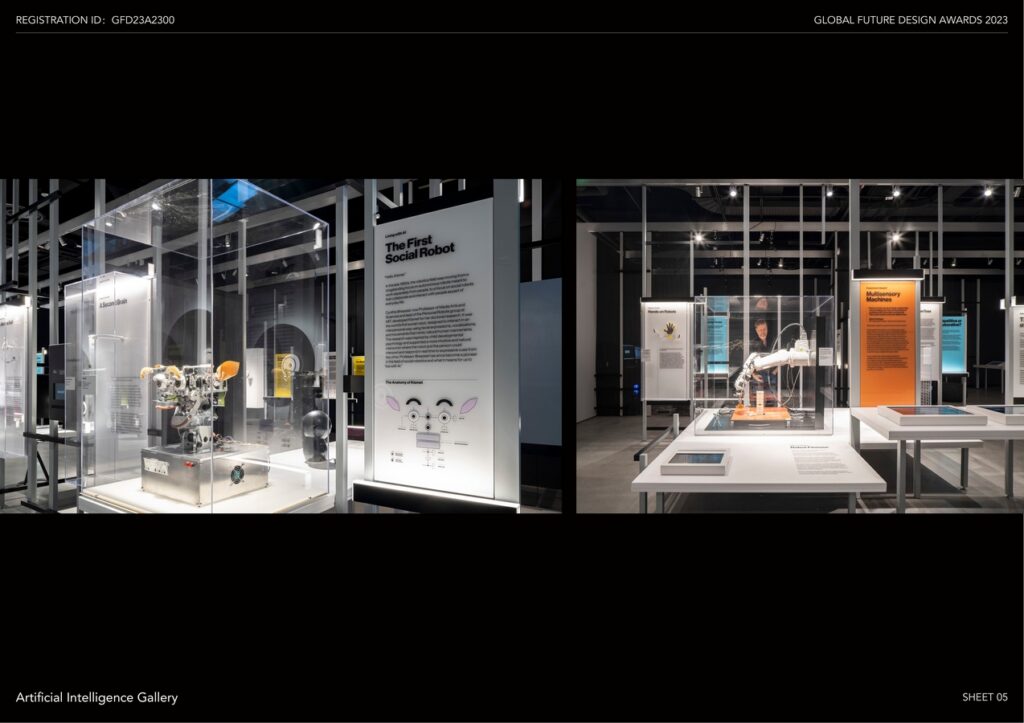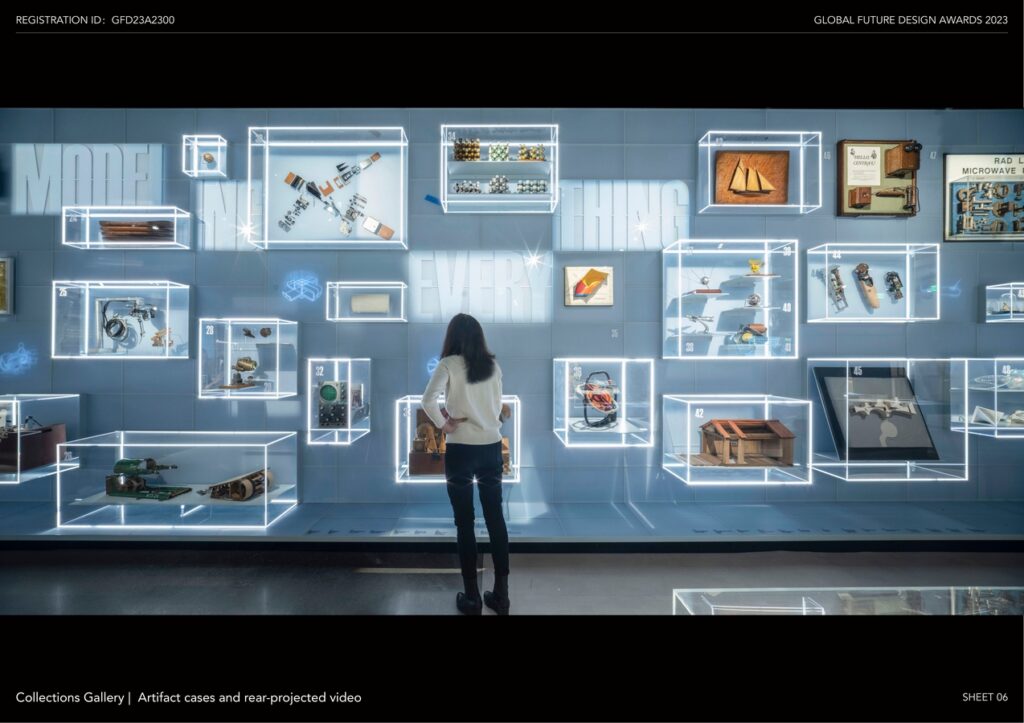Science and exploration are the underpinnings for community gathering and learning at the new MIT Museum. Each gallery has a bespoke materiality based on unique narratives of artificial intelligence, life sciences, and invention. Multi-sensory experiences and interactive displays are educational yet unexpectedly playful. The design encourages social bonding, whether this means conversing with a robot, looking for clues to discern if a video is a “deep fake,” or exploring ethical issues of genetic manipulation. The design is inclusive in its form and natural materiality and welcoming for all, no matter your level of prior knowledge.
Global Future Design Awards 2024: Entries Open!
Take your work to the next level. Register Now…
Gold 🏆 Winner
Global Future Design Awards 2023
MIT
Interior Design (Built)
Firm
Studio Joseph
Architect/Designer
Wendy E Joseph
Design Team
Alexandra Adamski, Alice Tallman, Charlotte Kasper Connie Wu, Daniel Toretsky, Jose Luis Vidalon ,Monica Coghlan Sharon Li, Shriya Sanil, Shuo Yang, Wendy Joseph, Wonwoo Park, Albane Jerphanion
Project Location
Cambridge MA
Country
United States
Photographer/Copyright
©Alex Fradkin
Social Media Handles
Facebook: N/A
YouTube: N/A
Instagram: N/A
Twitter: N/A
Website URL
N/A
Narrative
The MIT Museum focuses on the value of science and evidence-based reasoning. As some segments of society challenge broad-based global issues that threaten humanity, such as global warming, or the need for vaccination, this project provides an accessible forum for open discussion. The design helps the visitor to navigate themes with informative graphics, audio-visual media, and interactive physical displays and engagement accessible to all.
The design vocabulary shifts between curving planes and organic materials to tessellated, triangular forms to a bold scaffold of vertical and horizontal rails while never losing sight of the aggregated visitor experience. We foster ecological thinking with natural materials, local fabrication and push forward sustainability in partnership with curatorial interpretation.
AI: The irony of artificial intelligence is that it inspires new perspectives on human intelligence. The display armature metaphorically alludes to programming systems with vertical and horizontal scaffolding. There are unusual moments of shared exploration where visitors can play with, teach, or befriend AI. Visitors to write a poem in alternating verse with the AI (GPT 3) as a collaborative experience, then share to curving OLED screens.
Collections: The gallery displays hundreds of devices along a 90-foot wall. The casework is rear-illuminated light, and the wall is made of translucent material, receiving animated diagrams showing how objects work. Although this installation is considered extended use, it is fabricated to be extraordinarily durable and flexible to keep content fresh, responding to changing advances and emerging events.
Audio Cones: The museum is not a compilation of inventions but a place of inventive people. Wall-mounted audio “cones” allow visitors to hear directly from researchers and thinkers why they became scientists and what they study. Recordings are triggered when visitors step into the gobo-lit circle—interior lighting pulses to accentuate the speaker’s voice.
Essential MIT: The focus is on discovery, trial and error, and visions turned into reality. Visitors explore a wide array of paradigm-shifting innovations in ideas and technology, with models and artifacts that talk to discovery from the galaxies to nanotechnology. The tessellated rhythm of the exhibit structures has internally illuminated perforated steel, showcasing the discovery process at the heart of MIT’s culture. Visitors can explore a wide array of models and artifacts that talk about discovery, from galaxies to nanotechnology.


